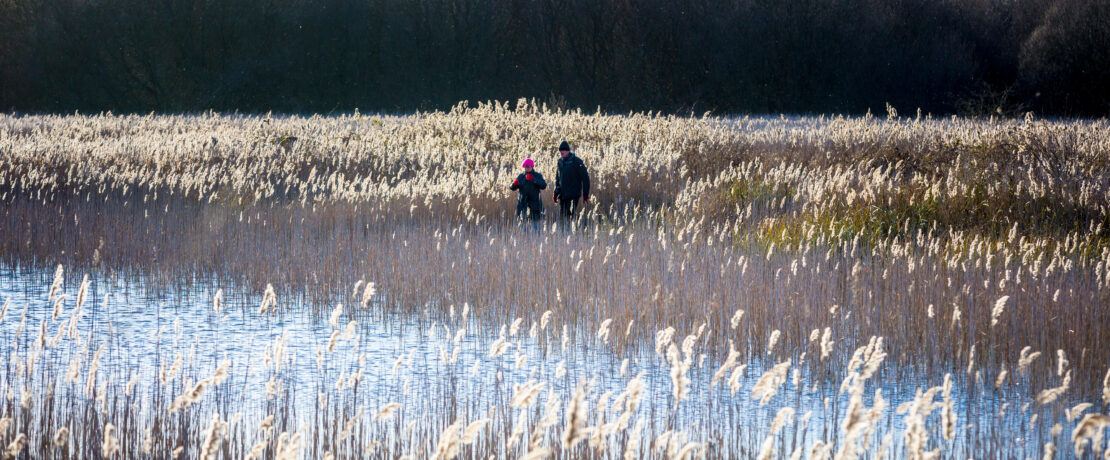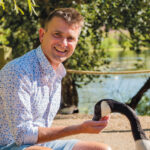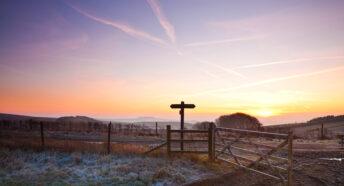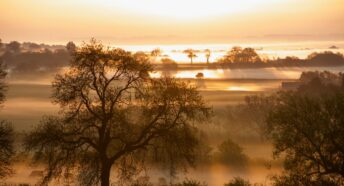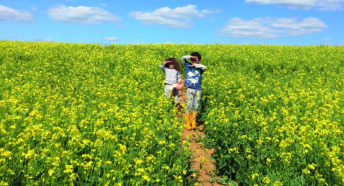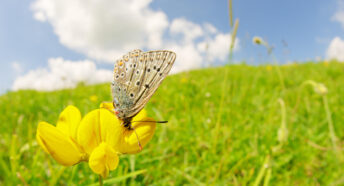England’s fascinating fenlands and why they need to be protected
We asked four passionate lovers of the eastern Fens to write about their fascination with these landscapes – and what we lose when wetlands disappear.
A clear, straight line
Writer and academic Noreen Masud is the author of A Flat Place, a memoir dealing with the peculiar and restorative beauty of fenlands and other flat places.
‘As the train travels east through England, and the ground levels out like clean water poured from a jug, something in me stills and quickens and rises. Flat landscapes are my very favourite. Where other people thrill to mountains or valleys, it’s flat spaces that connect to me. They make me feel alive and enthralled in a life where I often feel like I’m sleepwalking.
‘There are so many flatnesses in Britain, all different: Orkney’s rocky sea-plates, Morecambe Bay’s glistening stretches, Suffolk’s haunted shingle. And there’s no flatness like England’s eastern Fens. The water that made them so perfectly level is often hidden. Yet between Ely and Welney, the miles of neat swedes and fields seem poker-faced and mysterious under the blue sky, like they’re holding back a secret. They will work with you, they will cooperate, but they will never be wholly tamed.
‘Moving through the Fens is like coming to the end of something, in the best way: the end of performance. Here, I feel I’m somewhere real. Green and brown for miles, without apology. My eye can run and run along the horizon without being distracted or tripped up. Nothing is lovelier than a clear, straight line.’
Rich and pleasant land
Francis Pryor MBE is an archaeologist known for excavating Cambridgeshire’s Flag Fen, and the author of many books on history and fenlands, most recently A Fenland Garden.
‘When I started researching the pre-Roman history of the Fens, I assumed they would prove to be flat, uniform and sparsely populated. But I could not have been more mistaken. True, the Fens don’t have massive structures like Stonehenge, but that simply reflects the region’s lack of building stone. The inhabitants used wood – often oak – which was split into huge planks with timber wedges and mallets. They were skilled carpenters capable of building substantial reed-thatched houses on platforms above the water or on the drier shores of the fen edge and islands. They grew cereals on the slightly higher, flood-free land, and grazed cattle, sheep and pigs on the damper grassland. In the wetter months of the year, they were able to trap and net a wide variety of waterfowl, eels and fish, including sturgeon; many were probably smoked in the roof spaces of family homes.
‘Prehistoric fenland settlements have also revealed a large number of weapons, tools and ornaments made from bronze, iron and gold, some of which were imported from France and the Alps. And yes, they are very exotic; but somehow this doesn’t matter, because I can still sense the warm presence of the men and women who cherished them so fondly, some three thousand years ago.’
Space for nature
Norfolk-based naturalist Nick Acheson is the author of The Meaning of Geese and a trustee at Pensthorpe Conservation Trust, which is reintroducing captive-bred corncrakes back into the Fens.
‘There’s a scaly, reptilian quality to the bird in my colleague’s hands. Its long legs are pewter grey, its wide eyes the green of unpolished jade. At 13 days old, half-dappled with bronzy adult feathers, this corncrake chick is ready to leave its mother and be released into the Fens.
‘For centuries, fenland was a landscape of marshes and meadows, with thousands of acres of ideal habitat for corncrakes. In the course of the 20th century, changes in land use – especially the massive-scale loss of hay meadows – saw the once-common corncrake extinguished as an English bird. At Pensthorpe, with many partners, we are striving to change this.
‘In the peaty vastness of the Fens, there is still space for breeding bitterns and cranes. There is space for jangling corn buntings and for the soaring symphonies of nightingales. Perhaps, in this historic once-wetland, where millennia of human landscape use lie buried in the earth, there is space for corncrakes again. And it is humans who are trying to bring this lost bird back, one strange, reptilian chick at a time.’
Haunted by lost wetlands
Melissa Harrison is an award-winning novelist, nature writer, podcaster and children’s author who mourns the decline in our fens.
‘Late July and I’m skirting an arable field in East Suffolk, following a path much used by locals with their dogs. The land is flat, drained by straight, deep ditches; there are hedges, but for the most part they’re flailed and gappy, and not much good as habitat. But on one uncultivated triangle of land between a farm track and a small copse, Phragmites reeds send up their feathery, pennanted heads. They are a reminder that once, not long ago, this farmland was a fen.
‘In Wild Life in East Anglia, published in 1906, the writer and naturalist WA Dutt describes a drainage project, and how ‘the old fen flora vanished [with] the fen fauna. Most of the reed warblers went with the reeds, the water-rail with the rush and sedge, and the swallow-tail butterfly with the tall swamp flowers. A time came when there was no one alive who could remember what the marsh was like…’.
‘The intensively farmed land around my home is haunted by lost wetlands, by the memory of ghost fens. Fragments remain – some protected now, as nature reserves – yet the bucolic but nature-depleted cornfields I walk through daily whisper to me of loss.’
